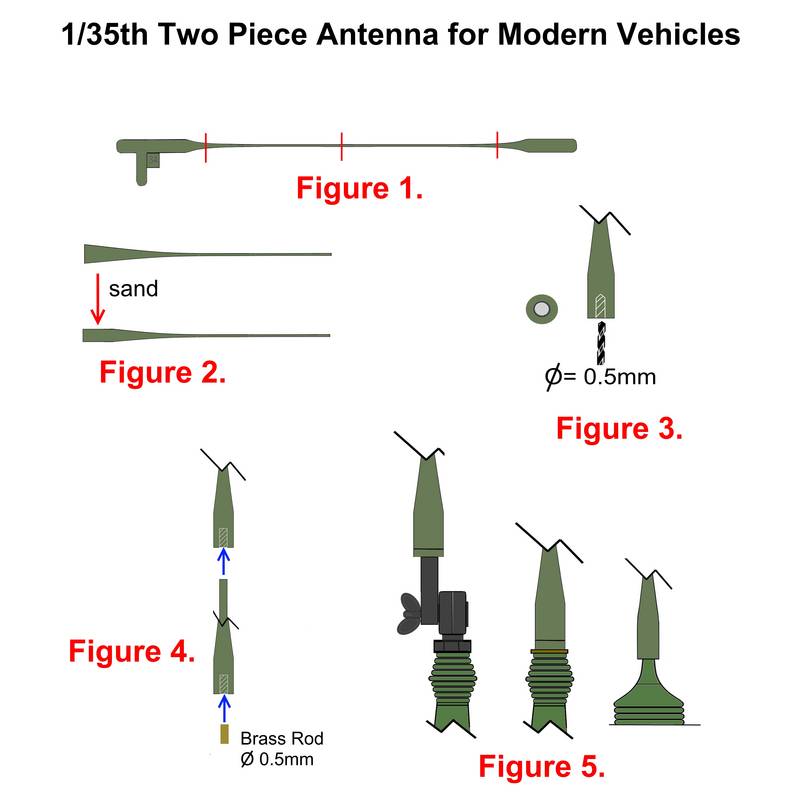I have had a couple of people ask me how I made the two piece antennas on my ASLAV-25.
In this thread I will attempt to answer that. However, I won’t explain all of the different radio types out there that sport the two piece antenna. The list would go on forever. So as usual, check your reference photos in relation to radio harnesses.
Figure 1. Take your favourite piece of sprue, heat it gently so that the plastic stretches. The trick here is to keep the tension just right on the stretched plastic so that when it cools, the sprue remains straight. It may take a few attempts, and it is best to try different brands of plastic as well.
Figure 2. Once you have cut both the “antenna” to length (I won’t go into what lengths they should be, as antenna lengths can change from radio harness to radio harness), sand the thick ends into a cylindrical shape.
Figure 3. With a 0.5mm drill bit, drill out the thick ends of both antennas.
Figure 4. This shows how the tops and bottom antenna are attached. The brass rod inserted into the bottom “ant” is then placed into a pre drilled hole in whatever AMU or Antenna base you are working on.
Figure 5. This drawing shows how they are attached to the different styles of bases.
Cheers Jason






















